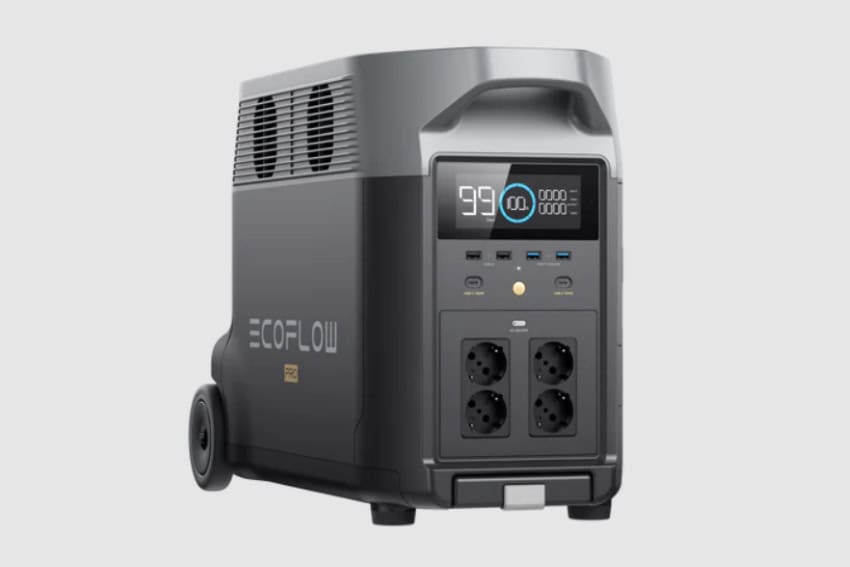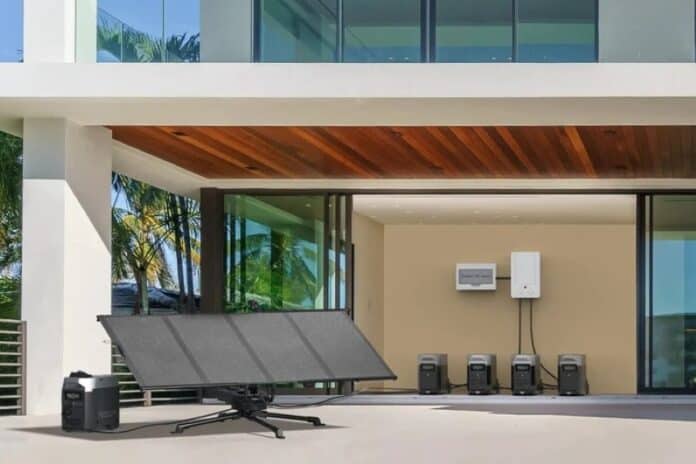If you’ve noticed your electricity bills creeping up, your geyser might be to blame. Many people overlook how much energy goes into heating water, and it’s easy to let bad habits drive up costs. But don’t worry—finding effective ways how to save electricity with geyser doesn’t have to be complicated. By making a few simple changes and being more mindful of when and how you use it, you can start saving money right away. This guide will walk you through practical tips and smart habits to optimize your geyser usage without sacrificing comfort. Let’s get started!
Does Switching Off the Geyser Save Electricity?
Fact checks—switching off your geyser when it’s not in use can indeed save energy. By monitoring your electricity usage with a prepaid meter or comparing monthly bills, you can determine the impact of turning your geyser on and off. When a geyser is left on, it constantly maintains the water temperature, using electricity even during periods when hot water isn’t needed. Turning the geyser off during these times prevents unnecessary energy consumption, as the geyser won’t need to repeatedly reheat the water.
How to Save Electricity with Your Geyser?
To conserve energy and lower your bills, try these ways to save electricity for your geyser:
1. Install a Geyser Blanket
A geyser blanket can lessen electric consumption by up to 10%. The water temperature in a geyser typically drops by 1 degree Celsius per hour. However, heat loss is minimized by insulating the geyser with an aluminum foil cover, reducing the frequency and duration of heating cycles. The results will be a clear cut down on energy usage, especially in colder environments or for geysers located in unheated areas.
2. Use a Geyser Timer
Installing a timer switch allows you to control when the geyser’s thermostat activates. Set it to turn on during peak usage times (typically mornings and evenings) and off during low-demand periods to substantially reduce unnecessary heating cycles. It’s effective for households with predictable hot water usage patterns, as it prevents the geyser from maintaining high temperatures when not needed.
3. Adjust the Thermostat Settings
Lowering your geyser’s thermostat temperature, especially during summer months, can lead to big energy savings. A temperature range of 50-55 degrees Celsius in summer and 60 to 65 degrees Celsius in winter is generally sufficient for most households. Such adjustment takes advantage of higher ambient temperatures in summer, reducing the energy required to maintain desired water temperatures. However, it’s crucial to keep the temperature above 50 degrees Celsius to prevent bacterial growth.
4. Insulate Hot Water Pipes
Insulating all exposed hot water pipes will slow down heat loss as water travels from the geyser to the point of use. It means less energy is needed to reheat water in the pipes, allowing hot water to reach its destination more quickly. Pipe insulation is a relatively low-cost intervention that can yield noticeable energy savings over time, especially in homes with long pipe runs or pipes located in unheated areas.
5. Install a Solar Geyser
Switching to a solar geyser or converting your existing geyser to a renewable energy source can dramatically reduce electricity consumption. Solar geysers harness the sun’s radiation to heat water, functioning effectively even on overcast days. While the initial investment may be higher, the overall long-term savings and environmental benefits make this an attractive option for many households. Professional installation is advised to ensure optimal performance and avoid potential issues.
6. Consider a Gas Geyser
Gas geysers offer an energy-efficient alternative to traditional electric geysers. It provides rapid hot water on demand, eliminating the need for constant water heating and storage. This can result in hefty energy savings, especially for households with irregular hot water usage patterns. Gas geysers also continue to function during power outages, providing an added layer of convenience and reliability.
7. Use a Solar Generator
Incorporating a solar generator into your home energy system can further reduce reliance on grid electricity for your geyser. A solar generator can power your geyser during daylight hours, leveraging renewable energy to heat water. Just take note that it is way more effective when combined with a well-insulated geyser and timer, allowing you to store hot water for use during non-sunlight hours.
If you want to experience the ultimate portable power station while saving electricity with your geyser, the EcoFlow DELTA Pro Portable Power Station is a top choice. As the first portable home battery designed for backup power partnered with a solar panel, it offers an expandable capacity from 3.6 to 25kWh and delivers 3600W-7200W AC output, enough to power 99% of your appliances. With its incredible 6500W MultiCharge capability, you can fully recharge the DELTA Pro in just 2.7 hours. Whether you need to power your geyser or charge your other devices, this power station has you covered. The long-lasting LFP battery supports up to 10 years of use, making the EcoFlow DELTA Pro a reliable and efficient solution for your water heating needs.

Tips to Use Geyser More Efficiently
In addition to saving electricity, you can also use your geyser more efficiently with these tips:
1. Choose the Right Size Geyser: Selecting a geyser that matches your household’s needs is crucial for energy efficiency. An oversized geyser wastes electricity by heating more water than necessary. Assess your family size and water consumption habits when choosing a geyser. As a general guide, allocate about 25 liters per shower, 35 liters per bath, and 5 liters for hand-washing dishes per person.
2. Maintain Your Geyser Regularly: Frequent checks of your geyser’s thermostat and element can prevent excessive energy consumption. Limescale buildup on the element pocket can cause the geyser to heat water to higher than desired temperatures, leading to increased electricity usage. Regular maintenance by a professional can keep your geyser operating at peak efficiency.
3. Take Shorter Showers: Reducing the duration of showers can significantly lower hot water consumption and, consequently, energy usage. While it may be tempting to linger under hot water, especially after a long day, being mindful of shower duration can lead to substantial energy savings over time.
4. Opt for Showers Over Baths: Showers generally use less hot water than baths, making them a more energy-efficient option. By choosing showers more frequently, you can reduce the demand on your geyser and lower overall energy consumption.
5. Fill Bathtubs Efficiently: When taking a bath, run hot water first before adding cold water. Practising such a thing will raise the bath’s temperature, reducing heat loss during filling. It will let you use less hot water overall, as the bathtub itself retains more heat.
6. Use Cold Water When Possible: For tasks that don’t require hot water, such as rinsing vegetables or brief hand washes, use cold water instead. As a result, you can reduce unnecessary demands on your geyser and save energy.
7. Schedule Hot Water Usage: Space out activities that require large amounts of hot water, such as showers, laundry, or dishwashing. By doing so, you give the geyser time to efficiently reheat water between uses, reducing strain and preventing it from constantly running to meet demand.
Conclusion
To wrap up, practising how to save electricity with geyser is easier than you might think. Implementing these simple tips, such as using a geyser blanket, adjusting the thermostat, and using cold water when possible, can highly reduce your energy consumption and lower your electricity bills. If you’re on prepaid electricity plans, being mindful of your geyser usage can help you make your credits last longer. Remember, every small change counts, and by being mindful of your geyser usage, you can positively impact both the environment and your personal wallet.
FAQs
How to make a geyser consume less electricity?
To make your geyser consume less electricity, you can take several steps such as installing a geyser blanket to insulate it, setting the thermostat to a lower temperature in summer (50-55°C), using a timer switch to only heat the water when needed, insulating exposed hot water pipes, and considering a solar or gas geyser installation.
Is it cheaper to keep the geyser on all the time?
No, it is not cheaper to keep your geyser on all the time. Without a timer switch, the geyser’s thermostat will switch the element on and off about 20 times per day to maintain a constant water temperature, wasting electricity when the hot water is not being used. So, switching off the geyser helps save electricity! Doing this along with installing a timer switch to turn the geyser on only during peak usage hours can lead to significant savings in the long run.
How can I reduce the cost of my geyser?
To reduce the cost of your geyser, you can implement several strategies. If you have prepaid electricity plans, monitor your usage to compare the days when the geyser is switched on and off. Other cost-saving measures include installing a solar geyser or converting your traditional geyser to solar, using a gas geyser, taking shorter showers instead of baths, and running hot water into the bath first before adding cold water.
